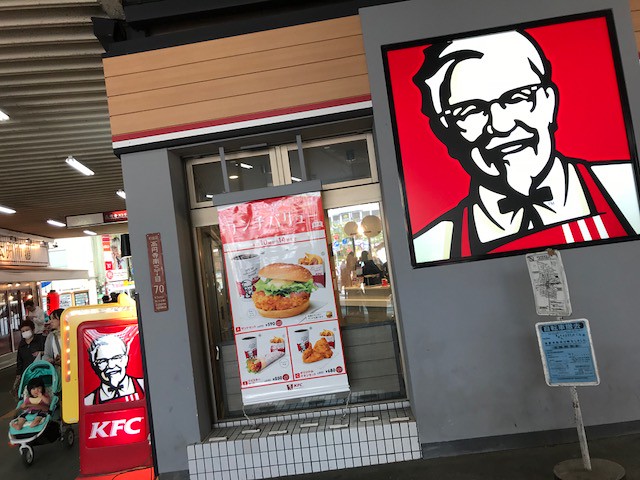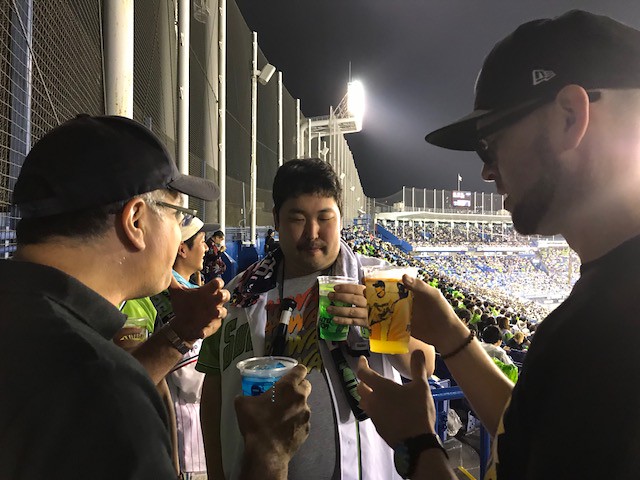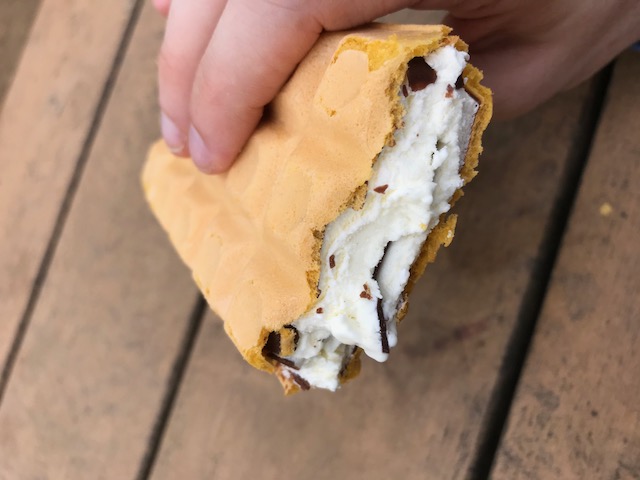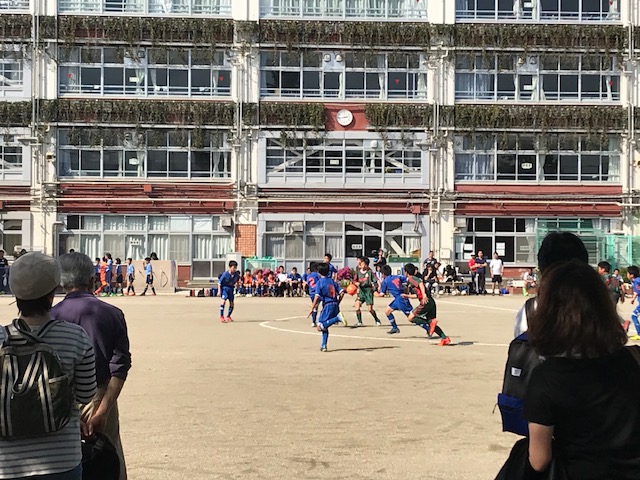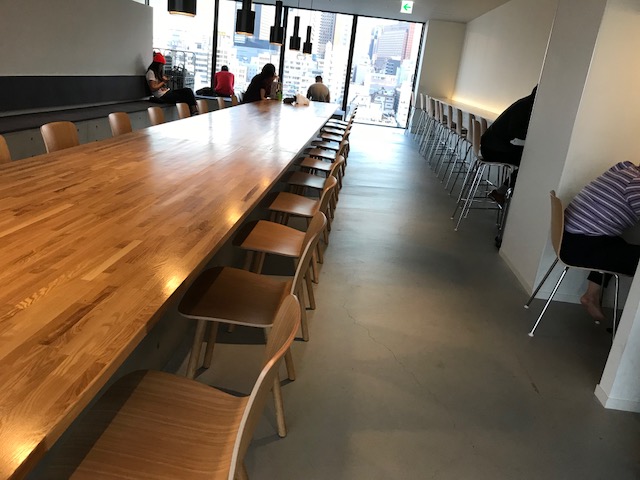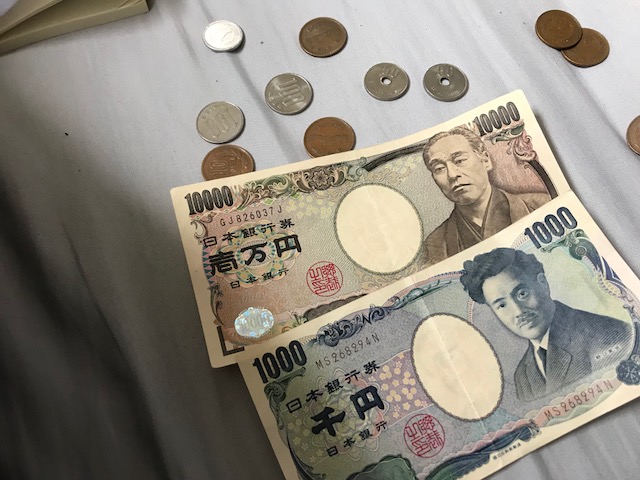My Spring 2018 Tokyo Trip (With Pictures)
When I decided I was all in, it was late January. A few times, my friend Jonathan Santiago had brought up the idea of me joining him in Tokyo, and I always said that it would be interesting but that I wasn’t ready to commit. He made it easy for me. He found cheap roundtrip flights for me to choose from. Plus, he was already going for a defined period of time, so I wouldn’t be alone. Up until this point, Israel (for Birthright) had been my only international experience outside of North America, and that was in the summer of 2011. So, I was due for a life-altering trip. More importantly, it provided a prime opportunity to combine work with leisure, given that I’m working on my first book, which focuses on an American baseball player’s (his name is Tony) exhilarating six-year journey in Japan.
After a series of train connections and a near-12-hour flight preceding those, I arrived at Shimo-Kitazawa station by early evening on Tuesday, April 17. Located in Setagaya, Tokyo, the massive city’s southwesternmost ward, the train station wasn’t a far walk from where my travel companion and I were staying. So he met me at the station. It was still light outside, although slightly overcast with a steady drizzle falling from the sky.
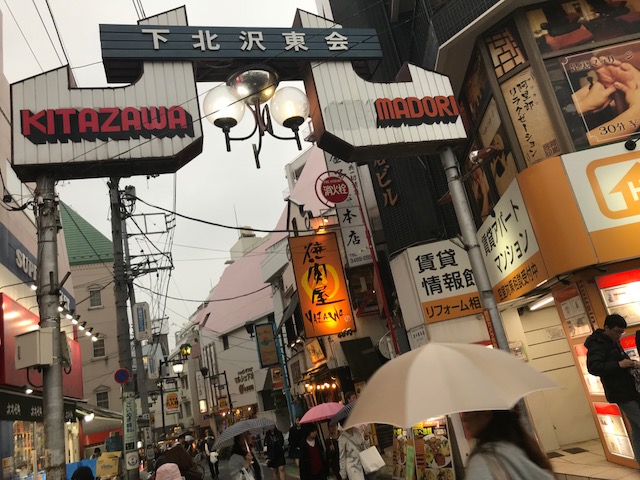
Nature
By the following Thursday morning, we were moving on from Setagaya and our first Couchsurfing host (more on that ahead) and onto the bustling, tourist-attracting neighborhood of Shinjuku, where we would be staying at a capsule hotel for the night. More on that later too, but after checking in, stowing away our bags and briefly exploring the premises, we knew we’d want to explore the area. Prominently on tap for the day was a visit to Shinjuku Gyoen, an imperial garden approximately 26 minutes walking from our hotel.
Tokyo famously boasts no shortage of tall, commanding buildings, but beautiful nature is rarely far away. Shinjuku Gyoen is a prime example. Now a national park, it was originally used as a residence for the Naito family during the Edo period nearly two and a half centuries ago. While the garden’s history is long and rich, it has been impeccably maintained over the years. We knew we had to see it for ourselves. We entered through the first front gate and paid the entrance fee of 200 yen, equivalent to less than $2 and more than worthwhile for what we were about to witness. The combination of trees, flowers, lakes, and overall tranquility was apparent right away. Unsurprisingly, we noticed a bride-to-be posing for wedding photos. There were a number of tourists (we heard so much English spoken along with other non-Japanese languages I couldn’t understand or sometimes even identify) as well as locals enjoying the Thursday afternoon sun in this heavenly location. There were amateur photographers like me, taking angle after angle on their phones, but also photography students with advanced camera technology documenting the lush scenery under the watchful eye of their instructor. Of course, I had to take a picture of the photographers because paparazzi deserve paparazzi of their own.
So, Jonathan and I walk around the grounds, which are expansive to say the least. We take pictures of the scenery with and without each other included. I plan on jogging through the garden and he’d like to take a nap, so we decide to separate with a plan of meeting back at a specific location. It’s so peaceful and freeing jogging in such an environment and not running in any particular direction. It’s a feeling I’ll never forget and hope to replicate in the not too distant future. Anyway, I stop every so often, feeling the need to capture the sights, but for the most part I fall into a good jogging rhythm and wind up logging some great exercise.
The garden closes at 5, us visitors are told over the loudspeaker in both English and Japanese. Since I’ve been running literally wherever my instincts were taking me, I’m not that close to where Jonathan and I were going to meet. I used the maps app on my phone, which says I’ve arrived at that destination, but apparently I haven’t (insert Apple Maps joke if you’d like or feel free to blame me). At this point, I contact my friend to ask to meet outside the exit, the same place where we came in hours earlier. I’m able to exit with time to spare, but as time continues to pass, I realize he’s nowhere in sight. Finally, maybe around 7-10 minutes after 5, he appears. Not that having to stay overnight in that amazing place would have been the worst torture in the world, but I’m glad he isn’t stuck in Shinjuku Gyoen until the next morning. He tells me that he slept longer than he intended and didn’t hear that it was closing until he read my messages upon waking up. What an excellent place to take a nap though!
The next day, our British friend, David Watkins, whom you’ll meet later, took us around Shinjuku and Shibuya. Our first stop that day was the Meiji-Jingu Shrine, a Shinto shrine dedicated to the spirits of the late Emperor Meiji and his wife, Empress Shōken. At the entrance, given it was April 20, we saw a marijuana legalization advocate offering free hugs in support of her cause (I did not partake, but I did document it with a picture). It turns out marijuana and other seemingly non-threatening recreational drugs are widely condemned by broader Japanese society. Naturally, we posed under the gigantic torii (no relation to Torii Hunter) leading up to the shrine. Yoyogi Park is situated right next to Meiji Shrine, but we wound up visiting Yoyogi another day during the trip. While there, we saw little kids playing, couples enjoying each other’s company, friends playing catch, college students drinking, tourists taking pictures, a man practicing Tai Chi and so much more. You get the point; the 134-acre park is eclectic. There was also a cordoned-off dog park area that was popular for owners and dog lovers alike.
Other parks visited on the trip include Mabashi Park, which was about only a 10-minute walk from where we were staying in Koenji, and Wabadori Park, a tremendous place to exercise with running and biking tracks on each side of a flowing river. Unfortunately, it was also the site of my Tokyo ankle injury. At Wabadori, which took 35 walking minutes from our AirBNB guesthouse, Jonathan and I jogged for about 20 minutes in two stretches. Sporting a dangerous vacation swagger (or just good old-fashioned recklessness), when we started to head back home, I sprained my ankle while running/hopping down stairs with my fatigue and lack of care to blame (that particular ankle has also been weaker than my right, given multiple previous sprains of it). I gingerly walked back the half hour-plus with Jonathan but did stop to get ice on the way.
Transportation
Transportation was extremely easy thanks to modern navigation technology and Tokyo’s state-of-the-art transit system. While in Setegaya the first couple days, we didn’t use the train that often, opting instead to explore the surrounding area on foot. We did use the train a few times, however, getting a feel for the protocol. Our first host and Jonathan recommended I buy a Suica card, which allows riders to load money onto it and automatically deducts the cost of each ride, thus saving ample work for the rider. Before I had the card, I had to go to a machine on the side, determine the fee it would take to get to my destination and then retrieve my ticket stub before entering the station. With the card, Jonathan and I would periodically put 2,000 or 1,000 yen, for example, on it, and then reload the card whenever its balance inched dangerously close to zero or less than what a ride would cost. I think I ended up spending something like $40 on train rides over the course of the trip. The Suica card required a 500-yen deposit, but the money was given back to us on the last day when we returned the physical card.
Our Koenji (what a unique neighborhood relative to the rest of Tokyo!) AirBNB, where we stayed for 11 nights until the morning of May 1, was located, and I’m not exaggerating, 30 seconds walking from Koenji station. We were 10 seconds from a McDonald’s and KFC, but that’s another matter (I ate at the McDonald’s once and not at the KFC). The route we’d take depended on the destination, but typically we would go one stop north to Nakano before getting out and transferring to a train bound for Shibuya or Shinjuku. Those train sections are uncomfortably (for me) large and crowded, but at the same time, it is pretty cool to see how Tokyo’s transit system runs like such a well-oiled machine. The masses of people largely know where to go, and each train, save for a few outliers, comes at least every 10 minutes. During certain times of day, especially rush hour, people pack into trains like sardines with little to no regard for personal space. One night, while returning from Shibuya, I witnessed firsthand an extreme example. Despite getting in line well before the train’s arrival, I made the decision to wait for the next one instead of trying to shove the mound of people in front of me who were barely inside the train themselves. I did take pictures of the chaos, however. At times when I was unsure of the platform I needed, locals were extremely helpful, often going out of their way to try to help, even with the language barrier.
Nakano, the aforementioned station that usually connected us to a different train, was about 20 minutes away if we walked. Usually we did that since we were rarely in a rush and enjoyed the exercise and fresh air. Decisions like those were a large reason why we both ended up walking so much throughout the trip. When we went to Tsukiji Fish Market from where we staying in Minato, we were faced with an easy question to answer: Take three trains for a total of 30 minutes or walk for 40 minutes?
To give a better sense of the walking we did certain days, one Thursday a little more than a week into the trip, I planned a two-hour walking route that included five destinations or places we wanted to walk through or by: Seisho-ji Temple, a nice Shabu-Shabu place for lunch, Aoyama Cemetery, the apartment complex where Tony and Hillary lived and Yoyogi Park. Most places were within 25 minutes of each other. Of course, the two hours of walking were spread out over many more hours than that. In fact, on my last full day in Tokyo, I walked a trip-high of 14.0 miles. That was the day I walked to and from the fish market, but I also walked to and from Meiji Jingu Stadium and from Jingu Stadium to Yoyogi Park and the reverse of that when I had hours to kill before the Wednesday night baseball game. While the 14 miles was easily the most, there were three other days in which I exceeded 9.5 miles and I averaged more than six per day. Unsurprisingly, I lost about 7-8 pounds.
(Yes) New Friends
David Watkins has lived in Japan since 2001 when he moved away from his native Great Britain. We had done interviews for the book and been in touch through email as the trip approached. We decided to go to a couple Yakult Swallows baseball games together, with David securing the tickets for those games. David also graciously offered to take us around Tokyo on an informal tour. As alluded to earlier, he took us to the Shinto shrine and all around Shibuya (including Harajuku) and Shinjuku. The day after we met him, David joined us at our first pro baseball game in Japan. It was a pleasure meeting such a nice guy. While there’s value and fun in exploring without context, having David on the tour and at the games was extremely helpful, allowing us to get answers to whatever we wondered. I really can’t thank David enough. He spent so many hours with us over the course of the trip and has always, even when we’re on opposite sides of the Pacific Ocean, made himself available through any number of mediums. He’s a perceptive and entertaining guy who possesses so much insight into Japanese baseball and the Swallows more particularly.
During many of his international traveling experiences, Jonathan has taken advantage of a Couchsurfing service, which matches like-minded travelers and hosts. By definition, it’s free to stay with a person, but it is understood that the host is expecting some type of cultural exchange or camaraderie. Our first host, Elena, lives in Setagaya. Originally from Russia, her love of the Japanese culture and language brought her to Tokyo, where she has lived for the last year-plus. She lives in a tiny studio apartment that’s located in a fun, lively neighborhood popular among college students. Elena was not only a gracious host, but she was also a very friendly and interesting person with whom we had great conversations and shared ample laughs. She also took us to an arcade (they’re called game centers), where we finished with some photo booth effects fun. Our second and final Couchsurfing host, Phillip, is an American attorney living in the wealthy neighborhood of Minato in a 16th floor apartment that overlooks the core of the city. Phil, a well traveled and well read Stanford undergrad and law school graduate, was full of stellar travel and food recommendations.
The aforementioned Koenji Guesthouse, as listed on AirBNB, housed us for 11 nights. With eight rooms, there were so many guests, international and otherwise, whom we met over our stay there. Jonathan and I shared a decently sized room with bunk beds, while all guests, 11 in total, shared common areas such as the kitchen and two bathrooms. One of the three men who maintains the property, Henry, is from Brazil but has lived in Japan for 23 years. He was often around with a smile and a wave if we ever needed any help or just wanted to make conversation. We were amused by how he would pronounce “Air Beaney B.” There was a couple from Brazil, another from Philadelphia, a woman from Europe, a young woman from a different part of Japan and others we didn’t get the chance to meet. As we stayed there longer, we began talking more with Kaja, a smart, down-to-earth woman from Toronto who was around our age. Jonathan and Kaja wound up growing closer and going places separately without me, but the three of us did do karaoke together and later ate at a superb Yakiniku restaurant. Prior to the karaoke session, the three of us enjoyed snacks and a drink at an izakaya, a Japanese pub. Kaja, a Level 2 Japanese learner, invited her friends, many of them American, to join us for karaoke. We had a great time singing and drinking for a couple hours even if most of the songs we requested did not get sung before our time elapsed. We joined Kaja and company at a game center later.
On back-to-back days, I met Jesse, the stepbrother of my book’s primary subject and Go Fujisawa, the main character’s interpreter/translator for five seasons in Japan. Both could not have been more warm and interesting and should continue to serve as excellent resources for the book. I met Jesse by myself, but Jonathan joined Go and me for lunch the following day. Go invited us to TGI Friday’s, which was located right outside of Tokyo Dome, where Jonathan and I would be attending a baseball game a little later that afternoon. We had a long, wide-ranging conversation before posing for a picture together. We were surprised and tried to resist when Go offered to pay for our food, but he wouldn’t take no for an answer. When Go comes to California, we’ll surely owe him a meal or two.
In Tokyo, Jonathan encouraged me to join two dating apps, which seemed like an interesting idea with little downside. I downloaded Tinder and Bumble, filled out a bio, added pictures and started swiping. He was using it too. During the trip, I met one person from the apps, a really smart and pretty Egyptian girl named Emantoinette or Eman for short. Her endearing go-to phrase in place of No problem/It’s OK/My pleasure was “Come on, man.” For our first meeting, we met at an izakaya and talked for almost two hours. Eman is interning for a marketing firm for a couple months from April until early June before returning to Egypt. The second and last time we hung out was the karaoke night. She had to stay late for work but was able to join our group at the game center. Jonathan’s second cousin, Erika, was another friendly face I met. Jonathan and Kaja joined Erika for a street festival, but I got the chance to meet Erika while we ate Yakiniku during our last week in town. Half-Filipino and half-Japanese, Erika moved to Japan when she was in her early teens and has lived there ever since. She’s a teacher, living in Nakano. Pardon the overuse of the term, but Erika was extremely friendly and provided many useful informal lessons about the culture and customs.
I’d be remiss not to mention the amazing guys and girls I met at Jingu Stadium whom David has known through attending games and/or the website he runs. Consistent with the collectivistic culture, while this group of fans doesn’t have assigned seats, whenever they’re at Jingu, they always sit in the same section. The bulk of these fans spoke fluent English and hailed from places outside of Japan. At one point, four of the guys decided to try the five player-themed cocktails since it was their first game of the season all together. In this bonding activity, each took a sip and then passed the drink to his left. The rotation continued until they settled on who would finish which. Then, Kozo went to the concession stands to get the fifth and final drink, which they all shared. Despite my technical outsider status, I appreciated them letting me try the drinks too (The mango one was by far the best; I didn’t really like any of the other ones. On the monthly Swallows podcast David and Kozo record with their friend Chris, they joked about how awful most of those drinks were.).
Food
In Tokyo, I thoroughly enjoyed a wide variety of foods. Naturally, there was plenty of sushi. Every single sushi place delivered its items on a conveyor belt, but we can divide those places into three types, based on the unique system each used: (1) One type of place had about five or six different-looking plates that were distinguishable by color and design. Patrons could grab any plate they wished off the conveyor belt. Then, at the end of the meal, a waitress/waiter would add up the cost based on how many empty plates of each variety were on the table in front of the patron. At places like this, small plates usually cost 100 yen on the low end. (2 & 3) The last two types of places had one computer screen per table or person, by which the customer would order what (s)he wanted. The difference between these places: One would employ a mini-bullet train to zoom on the conveyor belt right in front of the customer, where it would stop. At first, we had to be told by a waitress that once we retrieved the food, we needed to press the red button to send back the empty train (I was always taught never to hit red buttons, so you could understand my initial confusion). The other type of place similarly utilized the automatic system, however there were no trains that stopped right in front of your table or seat. Instead, you had to be alert as each of your plates was arriving or else one or more of your plates could have easily passed you and/or been accidentally taken by someone else. At these sushi places, items were typically delivered in 3 minutes or less.
From my perspective, the sushi was pretty fresh and especially simple relative to what I’ve grown accustomed to in the U.S. If you’re the originators of the craft and you have the best ingredients, why not let the food speak for itself as opposed to using gimmicks to convince people of the quality? The sushi we had at Tsukiji Fish Market was unsurprisingly the best of the trip. Taking Phil’s recommendation, we woke up around 5:20 in the morning. The previous night, he sent us the information for one of the more beloved sushi bars at the fish market. The two chefs start working at 6:30 sharp, but he suggested we shoot for 6 a.m. just in case we were unable to find the place right away. Typically, long lines form at these places that are in such high demand. By the time we found the place, it was about 6:30. Luckily, Jonathan and I were given the final two seats around the bar. A woman and her companion who arrived 5-7 minutes after us had to wait a half hour before sitting down. Four options appeared on the wall. We got our orders in, each picking something different with a plan of having half of each. The chef in front of us thoroughly cleaned the bar/counter before serving each customer’s sushi directly onto the bar without plates. No one used chopsticks; only their hands. My order was exclusively made up of sushi (placed on the bar), whereas Jonathan’s included other elements (I think) so his food was presented on a plate with chopsticks. It was the most fresh, delectable sushi I’ve ever tasted and all for barely more than $20 per person. I did not want to be picky or request anything that could alter the natural experience, so I kept to myself about the considerable wasabi in most of our sushi. The spiciness was too strong for me, but I started to adjust by the time we were done being served.
Before I continue with more food details, tea is very popular in Japan. Certain restaurants serve cold tea in pitchers already at each table. Most places, however, in our experience had Matcha tea powder on each table along with a mug and a hot water dispenser. Most times, we mixed at least a little bit of that. I’m a big fan of tempura, and the tempura exceeded my expectations. There was a close chain called Tendon Tenya that I really liked and was affordable, so I went there three times. I would get assorted tempura, which was served atop rice and alongside miso soup. Speaking of chains, we passed CoCo’s Curry House in virtually every neighborhood we visited. It was even cheaper than Tendon Tenya and pretty good, although the tempura place was much healthier and more aligned with my taste. I didn’t have udon (soup) much (I think only once), but it was pretty good. Often, I believe people order udon along with other items to help supplement it; for example, I got tempura and udon together.
Yakiniku, the Japanese equivalent of Korean barbecue, was the genre of Japanese food I was most looking forward to trying. Early in the trip, our first host, Elena, took us to a Korean barbecue place that was solid but left me hoping for a better Yakiniku experience. Fortunately, Jonathan’s cousin Erika came to the rescue, taking us to this spectacular Yakiniku place in her hometown of Nakano that she hadn’t yet visited. Of course, we ordered all-you-can-eat and ate a ridiculous amount of meat and vegetables. This was my second favorite meal of the trip after the Tsukiji Fish Market experience. Okonomiyaki is also very, very good and often cooked at one’s table. It’s kind of like a savory crepe. Jonathan and I had two different varieties of okonomiyaki with David Watkins one night. Both were exceptional. I found it funny how much mayonnaise David likes to put on his. It did taste really good and was not as disgusting as American mayonnaise. It actually complemented the food well.
Shabu-Shabu is similar to Yakiniku, which you also cook at your own table, but instead of using a grill, Shabu-Shabu employs a hot pot where meat and vegetables cook in the boiling water. After enjoying the meat and vegetables, you can then consume the broth in which the food was cooking. Taking a recommendation from Hillary, Tony’s wife, we wound up at Seryna, a high-end Shabu-Shabu chain in the Roppongi district. We were surprised to see the average entrée costing about 5000 yen ($50). Despite our waitress’ urging, we opted to split one Beef Shabu-Shabu meal. It ended up being enough food and was very good as we expected. The meal also came with courses of tea/coffee and ice cream.
The above Shabu-Shabu example is an extreme one, but as you can imagine, eating out virtually every meal for two and a half weeks can be costly. For that reason, we fit in a number of meals at convenience stores, where we found things such as sushi, tempura and more that was solid-tasting and cheap. 7-Eleven (no slurpees, but banking services and lots of good food), Lawson (Jonathan, and later I, started saying, “It’s the law, son” every time we’d see one as a nod to Kings color commentator Doug Christie’s game call relating to Ty Lawson) and Family Mart were the three convenience stores that inhabited virtually every other block of Tokyo. All three of them had the same teriyaki chicken and egg sandwich that I often bought for around $2 (usually, I got two at a time). Side note: The crust is always cut off the bread on sandwiches. Our friend David joked that it’s as if all customers are picky 5-year-olds who can’t deal with the crust. There are also vending machine places that serve curry and other cheap entrees. One uses the vending machine to select a dish. After paying, the customer then takes his/her ticket stub to the counter inside, where the chef takes it and begins cooking. So, to clarify, the food doesn’t come out of the vending machine; that’s just how you pay. There are, however, more than 5 million vending machines throughout Tokyo. Rarely does a block not contain multiple of them. Once, I bought a small but great cold can of coffee for 100 yen (just under $1).
Sports
I had the pleasure of attending three Nippon Professional Baseball (NPB) games, including two hosted by Tony’s former team, the Yakult Swallows, at Jingu Stadium, and a third at Tokyo Dome, the Yomiuri Giants’ home stadium. David Watkins, co-founder of TokyoSwallows.com, the team’s unofficial English-language site, joined me for both Jingu Stadium games (Jonathan only went with us for the first game). I won’t get into that many of the details here, but Jingu is a lovely outdoor stadium. We sat in the right-field bleachers, the heart of the home cheering section. The Swallows have a unique long-held tradition of raising and lowering mini-umbrellas in unison every time their team scores as well as in the middle of the seventh when we would do the seventh-inning stretch Stateside. While this is happening, Tokyo Ondo, a spring festival song plays. During the first game we attended, which was against the Yokohama DeNA BayStars, the Swallows had a three-run inning. Because they scored a fielder’s choice ground out followed by two straight run-scoring wild pitches, we had the joy of practicing the umbrella ritual three straight times in rapid succession; we barely had a chance to sit down in between. Despite scoring two runs in the first and holding a 5-4 lead going into the final inning, the Swallows lost 6-5 in 10 innings after Connecticut native Matt Carasiti blew the save. In fact, the Swallows lost all three games I watched in person. The other game I saw at Jingu featured a steady drizzle for two-plus hours before the rain stopped, just in time for it to start up again prior to the game’s completion.
Tokyo Dome is a legendary stadium housing a legendary team’s games. We were there on a national holiday commemorating the late father of the current emperor. Naturally, the game was sold out. It was definitely a memorable experience and one I’m grateful I had, but the sell-out and closed dome combined to create a stuffy sweat lodge feeling. Whenever the Yomiuri Giants scored, their fans, which easily outnumbered those of the Swallows, would wave around orange towels. Koji Uehara, now 43, was brought in to an 11-1 game and got a rousing standing ovation in his first season back with the Giants after spending the previous nine in the U.S., including a championship 2013 campaign with the Red Sox. During the bottom of the fifth, the Giants had a dominant eight-run inning with seven of those runs being charged to 19-year-old Yugo Umeno. I hope the poor rookie can turn it around to have a fruitful professional career. While he was in the majors (they call it the Ichi-gun level in Japanese), he suffered an unheard of 42.43 ERA in three appearances.
Earlier in the day, before we went to our first NPB game, we saw kids playing organized soccer on one school field. On a nearby field at Mabashi Park, we also saw an organized youth baseball game. Interestingly enough, there was no dirt. Just like Tokyo Dome (but worse), every moderately hit ground ball bounced over the infielders’ heads due to the hard surface.
For most of the first week, I was on the prowl for a place to watch live NBA playoff basketball. The problem was that most bars wouldn’t open until 4 or 5 p.m., and by then, weeknight games would have already been over due to the 16-hour time difference. In Shibuya, however, there was this hidden gem called Coast 2 Coast. I quickly learned it often shows games on tape delay, something I wasn’t interested in attending. On a Sunday though, they opened early enough (12:30 in the afternoon) for me to watch the second half of a critical Thunder-Jazz first-round game. I took advantage of that and was amazed with what I saw. The owner, who merely goes by Meg (it even says “Meg” on her business card without a last name), is in love with the NBA. Her bar is meticulously decorated with NBA art and memorabilia that she’s collected over the years. We had a long, detailed conversation about how she fell in love with basketball (on a visit to the U.S., she watched Michael Jordan play and the rest was history), whom her favorite player is (the Pacers’ Victor Oladipo), how she’s collected so much cool stuff and more. She even provided analysis for what sets Donovan Mitchell apart (his “cool, laidback” demeanor is critical to his killer instinct, she argued).
New Experiences
I wasn’t sure how I’d respond to sleeping in a locker essentially. It’s called a capsule hotel, and they’re not really lockers where people sleep. In fact, they’re more like pods. I found mine to be spacious. The facilities at Nine Hours Shinjuku-North, a relatively new capsule hotel, were immaculate. The place was so well maintained that certain things their staff did seemed excessive or neurotic. In the common living/work room, every so often, an employee would take out a ruler and make sure every chair was the same distance from the long conference table. Watching him do it was strangely fulfilling, but also just plain strange. Upon our arrival at the hotel, Jonathan and I were each given a bag with slippers, a toothbrush and other basic essentials. Each of us was given a paper key card that corresponded to both our locker and pod number, which were the same. Specifically, mine was 445 and his was 444. Men had a couple floors where their pods could be and a separate elevator to take them there and to the men’s bathroom. The same was true for the women. Then, of course, there was a co-ed common area alluded to above. I comfortably showered there and also enjoyed sleeping in my pod. Because I’m a light sleeper and so many people are close together, I regularly woke up from others coughing, but it was easy to fall back asleep.
An onsen is a communal Japanese bathhouse that typically also has natural hot springs. Largely indoors, but not entirely, we thought it would be smart to do this on a rainy day. Eight days before we were set to leave Tokyo, on a rainy Wednesday morning, we decided to do it. Men are naked in their space, and women are naked in theirs. That certainly was a little uncomfortable, especially with a friend in the same room, but as expected, it wasn’t a big deal once I acclimated. It’s difficult to explain the setup, but there are many hot bath areas with varying minerals and degrees of heat. Each person must shower before going into those tubs without clothes. It was so refreshing, but we didn’t quite realize how refreshing it was until we left. I joked that I’ll never be able to feel clean after a normal shower ever again. When one leaves the gender-specific area where nudity is required (outside of a small hand towel that no one really uses to cover up), a bathing suit is required in the co-ed area. In that larger area, there was a swimming pool, a sauna, a hot tub, a steam room, a second hot tub outside and, also outside, natural hot springs that included a warning that light-colored bathing suits could be permanently dyed.
Jonathan had this idea, so I indulged him. I like dogs a lot more than cats, but we ultimately went to a cat café, because it was close and convenient one night when we were walking back from the day’s earlier activities. We paid I believe about $10 for a half hour with 10-12 cats. The owner was very smiley, but spoke not a word of English. What was clear was that she loved her cats like a proud mom. Most of the cats were pretty shy and didn’t like to be touched, but I grew fond of a particular hyperactive cat. This cat was absolutely mesmerized by a pink ball I kept throwing to him/her. The cat would usually excitedly chase the fluffy ball, but sometimes it just liked to bat at it with its left hand (it was definitely a southpaw cat). Jonathan, a superb singer, was singing to this cat at one point. It was cool to see the cat sit still for a brief moment while that was happening. There’s a great picture of that included below.
My Budding Japanese
So, I recognize I have a long way to go, but I did make some effort to learn basic phrases that would come in handy over the course of our travels. Konnichiwa (hello) and arigatou (thank you) were two big ones that I already knew. Everything else took a little bit of effort. Plus, arigatou by itself is seen as not as friendly or sincere as arigatou gozaimasu (and the last syllable isn’t really pronounced; the speaker just trails off at that point). There’s a certain pitch employed by Japanese speakers that to me sounds sing-songy. In my experience, I got better feedback (judging by body language, including smiles) when I adopted the pitch a little. So other than those, these were the three I practiced and used as much as I could:
- Daijobu des – No thanks/it’s OK
- O mizu o kudasai? – May I have some water please?
- Sumimasen – Excuse me
I used those three a lot. I probably went overboard, but how else does one learn quickly? Repetition is a good place to start. The first of the three I often used when a convenience store attendant would reflexively put my item(s) in a bag. “Daijobu des,” I’d say, and they would nod and/or smile before I walked away with my stuff. I also got a chance to use the phrase when people were handing out fliers I didn’t want (which was almost always in certain areas). At virtually every restaurant where there wasn’t already tea at our table, I would practice asking for water.
Fin
Just kidding. What a pretentious way to end a Tokyo trip photo essay (or movie…I’m talking to you people who end your movies by putting that on the screen). Anyway, to say that the trip was more than worthwhile would be a gross understatement. Being away from my normal routine centered and calmed me. I gladly took the four days or so of jet lag in return for all the peace and education the experience brought me. It also left me motivated as ever to finish my book, easily the hardest thing I’ve ever tried to do. The two-and-a-half-week duration was ideal, given that I didn’t feel rushed to fit an unrealistic number of activities in each day. On the flip side, a longer trip wouldn’t have been financially feasible. I thought it was interesting that steady rain fell for hours on our last night in town just as it had on the afternoon of my arrival 17 days earlier (feel free to go crazy with what we could make this mean metaphorically about cleansing and beginnings and ends). Plus, the weather was consistently so nice virtually every day in between those two.
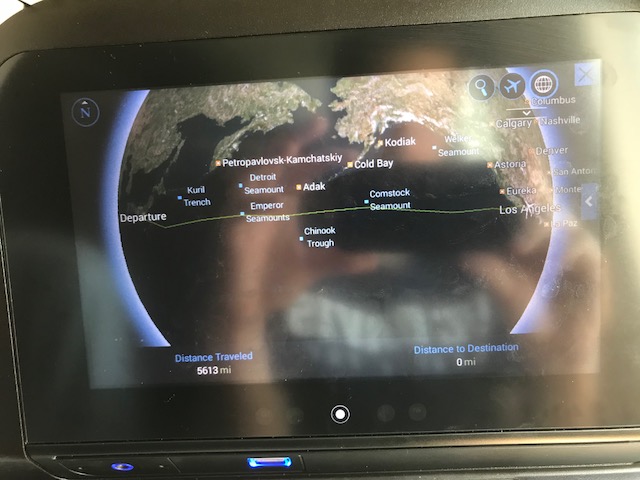
I want to thank Jonathan again for encouraging me to join him on this trip. Going on the trip, alone, as well as a handful of activities during it, were squarely out of my comfort zone. Instead of not doing them, I pushed through and was rewarded in the end. This travel experience taught me so much about Tokyo and the Japanese culture, but I think it may have taught me almost as much about myself.
*Bonus Photos (There’s a misspelling in each of the last three photos if anyone else is amused by that)




